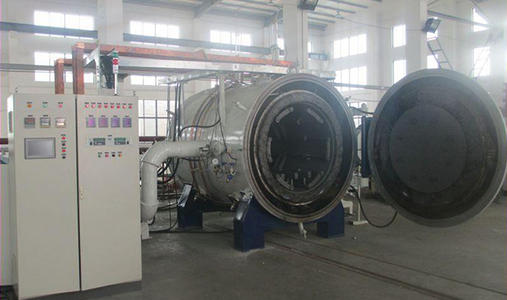

The grain size of tungsten powder can affect the grain size and properties of the cemented carbide, and the hardness can be improved by refining the tungsten grain size. In this experiment, different thicknesses of tungsten are used, tungsten-cobalt alloy is used as the research system, a small amount of tantalum is added, and sintering is performed at different temperatures to study its performance. The influence of sintering temperature on the structure of twin-crystal cemented carbide is as follows:
The average grain size when sintered at 1425℃ is 0.91μm, and the standard deviation is 0.36μm;
The average grain size when sintered at 1450℃ is 0.75μm, and the standard deviation is 0.33μm;
The average grain size when sintered at 1500°C is 0.98μm and the standard deviation is 0.42μm.
When sintered at 1425℃, the grain size is mainly distributed in very fine crystals, which is basically normal distribution; when sintered at 1450℃, the grain size is concentrated in the adjacent ultrafine crystals and ultrafine crystals, and the sum of the two accounts for Nearly 70% of the total number of statistics, the number of nanocrystals has also reached the highest; when sintered at 1500 ℃, the grain size is mainly distributed in very fine crystals, but some of the crystal grains grow up obviously, and a few coarse grains appear, resulting in nanocrystals and ultrafine crystals. The proportion of fine crystals decreases while the proportion of medium crystals and medium coarse crystals increases, and the grain size distribution is more dispersed.
The grain size of tungsten does not increase with the increase of sintering temperature. When sintering at 1450℃, the grain size of tungsten decreases, which is mainly related to the inhibitory effect of tantalum. The dissolution of the inhibitor in the binder phase can reduce the solubility of tungsten in it, thereby inhibiting the growth of tungsten in the binder phase through the process of dissolution and extraction. When sintering at 1425℃, due to the low temperature, the solubility of tantalum in cobalt is not large, and the inhibitory effect is not obvious; when sintering at 1450℃, the eutectic temperature of tantalum in cobalt is reached, and the solubility of tantalum in cobalt is increased, which has a negative effect on tungsten. The inhibitory effect of tungsten is enhanced; the temperature continues to rise, the solubility of tantalum in cobalt will not continue to increase, and the inhibitory effect remains unchanged, and high temperature is conducive to the growth of tungsten grains. Therefore, when sintering at 1500 ℃, the tungsten grains continue to grow .

Hot information

